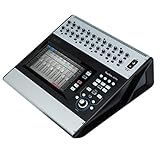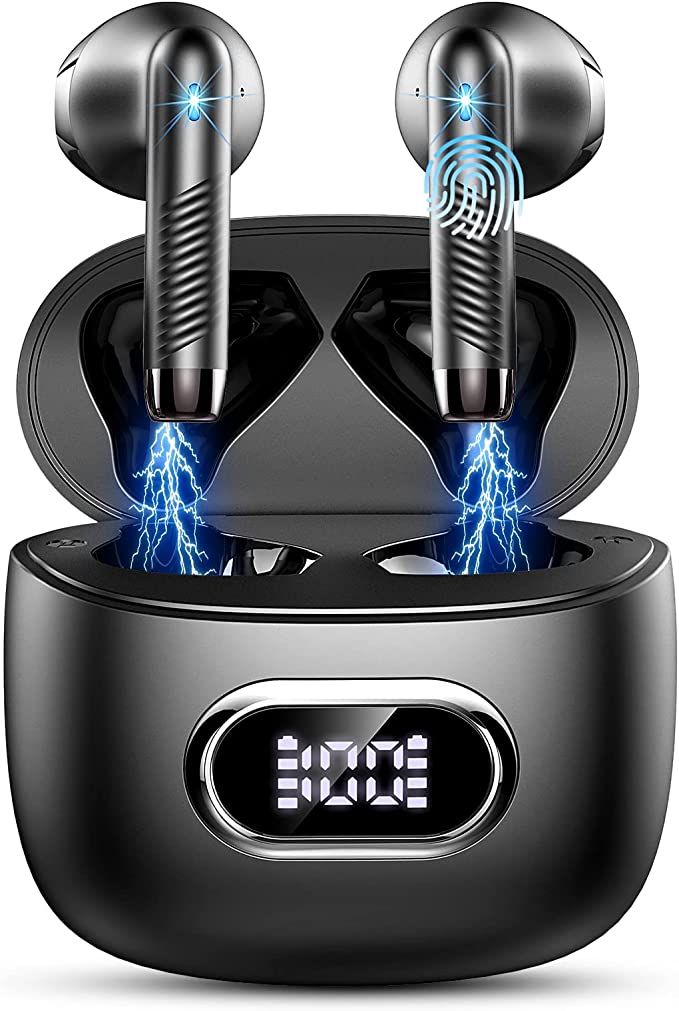An audio engineer’s journey from analog behemoths to the pocket-sized power of digital mixers, and the ghost of a 1982 DSP chip that started it all.
I remember the smell. It was a unique cocktail of hot vacuum tubes, solder, and the ozone tang of overworked power transformers. In the early ‘80s, the recording studio was a physical place, a temple of massive analog consoles with rivers of faders, towering racks of outboard gear that blinked like a starship bridge, and two-inch tape machines that we treated with the reverence of ancient scrolls. We were artisans of a physical craft. Back then, while we were busy literally cutting and splicing tape with razor blades, a quiet revolution was sparking to life in a Texas Instruments laboratory. In 1982, they released a chip, the TMS32010. Most of us in the music world didn’t notice. But we should have. That unassuming piece of silicon was the genie being coaxed out of its bottle.

The Awakening of the Genie: The Dawn of Processing Power
For decades, manipulating sound was a purely analog process. If you wanted to change the tone, you sent the electrical signal through a physical circuit of capacitors and inductors called an equalizer. If you wanted to control the volume swings, you used a compressor, another box of complex electronics. To add reverb, you literally played the sound in a tiled room or vibrated a large metal plate. It was all wonderfully tangible, but also incredibly expensive, heavy, and inflexible.
The genie that changed everything is called a Digital Signal Processor, or DSP. It’s a special kind of microprocessor, and the easiest way I can explain it is this: think of your laptop’s main brain, its CPU, as a brilliant university professor. It can write poetry, debate philosophy, and manage a thousand complex tasks at once. A DSP, on the other hand, is a lightning-fast mathematician who is obsessed with one thing: arithmetic. It can perform billions of calculations—additions and multiplications—every second. This relentless, specialized focus is its superpower.
Before the DSP can work its magic, sound has to learn to speak its language. This happens through a process governed by what engineers call the Nyquist-Shannon sampling theorem—essentially the rulebook for converting the smooth, continuous wave of sound into a series of discrete digital snapshots (sampling) and assigning a numerical value to each one (quantization). Once sound is translated into a stream of numbers, our genie, the DSP, can finally get to work.
The First Wish: Taming the Laws of Physics
Every live musician knows the sound—that sudden, gut-wrenching screech of acoustic feedback. For years, fighting it was a dark art. We’d have to “ring out” a room by pushing frequencies until they fed back, then frantically try to find the right slider on a 31-band graphic equalizer to pull it down. It was clumsy, and you often took a big chunk of the good sound out with the bad.
This is where a modern digital mixer like the QSC TouchMix-30 Pro feels like it’s wielding actual magic. Its Anti-Feedback Wizard is our genie acting as an acoustic sniper. Deep inside, the DSP is constantly running a process based on the Fast Fourier Transform (FFT) algorithm, which breaks down complex sound into its constituent frequencies. The moment a feedback loop begins to form—a runaway cycle of constructive interference—the DSP sees that single frequency spike in the data. Before your ear can even register the annoyance, the processor has deployed a surgical notch filter, a deep and incredibly narrow cut at just that one frequency, leaving the surrounding audio completely untouched. It’s a perfect, targeted strike.
But the genie’s command over physics doesn’t stop there. A room isn’t just a space; it’s an instrument. Its dimensions and surfaces cause it to resonate at certain frequencies, creating “room modes” that can make a bass guitar sound boomy and indistinct. The TouchMix’s Room Tuning Wizard tackles this by first playing calibrated pink noise through the speakers. Why pink and not white? Because pink noise has equal energy per octave, which more closely mirrors how our ears perceive the frequency spectrum. The mixer then listens through a microphone, uses its built-in Real-Time Analyzer (RTA) to see how the room is “coloring” that noise, and automatically builds a corrective EQ curve. The genie, in effect, listens to the room’s bad habits and teaches it to behave.
The Second Wish: The Power to Bend Time
A band’s most precious, non-renewable resource is its creative energy in a shared space and time. I’ve seen countless hours wasted in rehearsals and soundchecks with musicians standing around, waiting for the engineer to dial in the sound. It’s a creativity killer.
Here, the genie grants perhaps its most profound wish: control over time itself. The ability to record all 32 channels directly to a simple USB hard drive is more than just a recording feature; it’s a form of sonic time travel. It creates a perfect, high-fidelity digital clone—a “snapshot”—of the entire performance, with every microphone and instrument isolated.
This enables the workflow we call the “virtual soundcheck.” The band can play one song with full energy, and then leave. I can then spend the next two hours in an empty room, playing back that perfect “time-slice” through the mixer again and again. I can experiment with the drum compression, fine-tune the vocal effects, and get the guitar balance just right, all without burning out the musicians. When they return for the show, the sound is already 95% of the way there. It has fundamentally changed how we prepare for a live performance.
The Genie and Its New Lamp
All this incredible power, born from a 40-year-old chip, finds its modern home—its “lamp”—in the elegant form of the TouchMix-30 Pro. The 10-inch touchscreen is the portal, the conversational interface with the genie. But look closer, and you’ll see a crucial design choice. The gain knobs for the microphone preamps are still physical, analog potentiometers. This isn’t an oversight. It’s a deliberate acknowledgment that the initial capture of sound—the job of the Class-A preamplifier—is a sacred, analog process where the quality of the electronic components matters immensely. It’s a beautiful bridge, respecting the best of the old world while fully embracing the power of the new.
And the magic extends even further. With a simple Wi-Fi connection, I can untether myself from the console entirely. I can walk to the back of the hall, iPad in hand, and adjust the mix from the same perspective as the audience. I can stand on stage next to the singer and dial in their monitor mix exactly how they want to hear it. The genie is no longer tied to the lamp; it follows me.
Conclusion: What’s the Next Wish?
From that single DSP chip in 1982 to this portable command center, the journey has been staggering. What once filled a room now fits in a carry-on bag. The core purpose of technology like this is not to show off its own complexity, but to remove barriers, to take the arcane knowledge once held by a few cloistered studio gurus and place it into the hands of any musician with a story to tell.
As we look forward, with artificial intelligence beginning to whisper its way into audio, one has to wonder what the next wish will be. An AI mix assistant that learns my creative tastes? A processor that can remove the sound of a bad room from a recording after the fact? Perhaps. But no matter how powerful the tools become, the genie inside—the fundamental power of Digital Signal Processing—will remain at its core. And it serves a single master: the human desire to create, to connect, and to move one another with sound. The technology is astounding, but the real magic, as always, is in the music.




